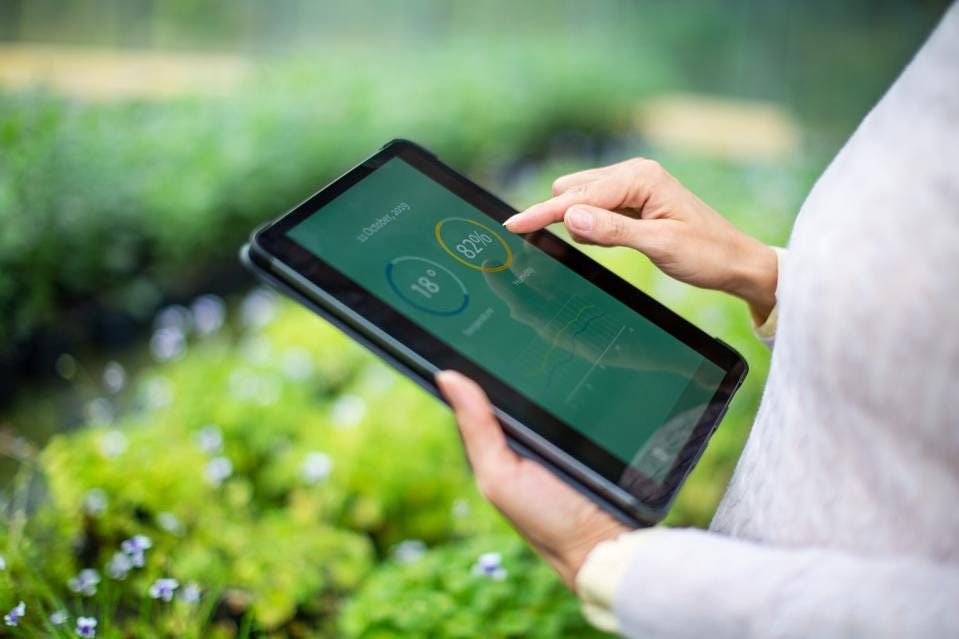Three Agriculture Technology Trends To Watch In 2023
15 February, 2023

As the world population continues to grow and the human population becomes more urbanized, there is an increasing demand for food. This has led to a rise in the use of agricultural technology and innovations to meet and sustain the demand.
In fact, the AgTech market is booming, with no signs of slowing down. In 2021, the smart agriculture market was valued at $18.12 billion, and the market is projected to reach $43.37 billion by 2030, according to a report by Precedence Research. This year, I believe investment into AgTech will continue to evolve and be used in new ways. As the CEO of a company that provides technology solutions for indoor farming, I expect there to be new technologies introduced that will help farmers become more efficient with their time and resources, an expansion of what can be grown indoors and an increased interest from universities that will spearhead industry-changing research.
Product Category Expansion In Controlled Environment Agriculture
Controlled environment agriculture, otherwise known as “CEA” or “indoor farming,” “is an advanced and intensive form of hydroponically-based agriculture where plants grow within a controlled environment to optimize horticultural practices,” according to Cornell University’s College of Agriculture and Life Sciences. Today, CEA facilities mainly produce herbs, lettuces, microgreens, tomatoes, berries and flowers, the American Council for an Energy-Efficient Economy said.
CEA aims to mimic ideal conditions for growing regional plants anywhere. For example, if someone in Tennessee wanted to grow a Palisade peach, they might use an indoor farm to mimic Colorado’s sunny summer days and cool nights. From my perspective, freshness and reduced transport time alone could fuel an increase in the number and types of crops grown in this way.
In 2023, I predict we’re also going to see an expansion of the types of products grown in a CEA environment due to ongoing supply chain issues and associated challenges such as the rising costs of goods and services. Indonesia’s palm oil export ban in 2022 shook the already-strained global cooking oil supply and left many buyers without alternatives. This scenario is one example of why I expect more leaders in the agriculture space to take a new look at the category and determine what more could be planted using CEA methods.
Universities Becoming More Involved
In 2023, I also anticipate colleges and universities putting more resources into agricultural research. For example, the University of California at Davis received a donation in 2022 from Lynda and Stewart Resnick of Beverly Hills for $50 million to build an agricultural research hub. The “center will work on making crops more resilient and sustainable during climate change, maximizing water and energy efficiencies and expanding access to nutritious food,” the LA Times reported.
Another example is from Nationwide, which promised an initial $2 million to create the AgTech Innovation Hub at Ohio State University, which will research how to combat the impact of climate change on crop production, the American City Business Journals said (paywall). The College of Agricultural and Life Sciences at the University of Idaho will receive a $55 million grant from the U.S. Department of Agriculture to help Idaho farmers address climate change. Harrisburg University also announced a one-million-dollar donation to help fund a 23,000-square-foot Center for Advanced Agriculture and Sustainability that’s focused on researching new technologies in the food and agriculture space.
Rise Of Automated Vertical Farms
In 2023, I believe vertical farms could become more automated. Technology and automation, including artificial intelligence, can help support consistent plant results with predictable yields without the issues that can be caused by human error and the labor costs incurred with traditional farming methods.
Of course, it’s important to note that this innovation would come with potential challenges and additional needs, such as higher upfront equipment costs and training workers on how to use the technology. Operations that invest in new technology will need to upskill their workforce to prepare for the future of work. In doing so, they can better position themselves to be the leaders of their industry.
Putting 2023 AgTech Trends Into Action
Investors are already targeting farming innovations such as CEA. In 2022, indoor farming attracted more than $800 million in funding in roughly the first half of the year, according to Pitchbook. With the current economic uncertainty, the investment pipeline might lag, but the good news is that agriculture is an industry that is not a “nice to have”; it’s a “need to have” if we want to be able to feed the world.
Leaders in the agriculture space should take action and stay informed by researching trends to see what the future might hold. Adopting an open mindset will help agriculture professionals harness the potential of upcoming trends as well. By doing these two things, we can prepare ourselves for the future of this industry.
Useful Links:
Source: www.forbes.com
TAG(s):
